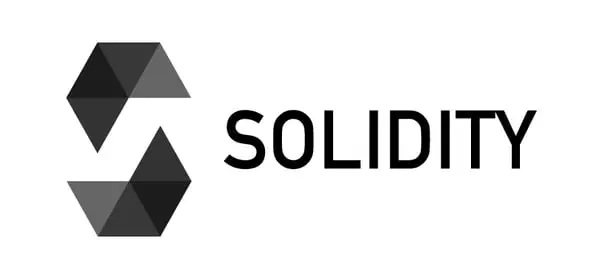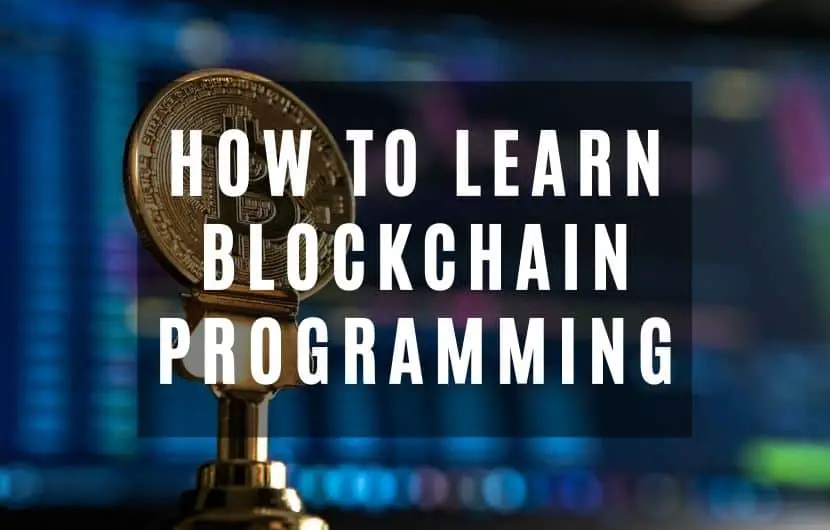Unless you have been living under a rock for the past 11 years, you probably have heard the term “Blockchain” or “Bitcoin” being mentioned on one or more occasions. Blockchain seems to be the buzzword just after its predecessor Bitcoin. However, since Bitcoin was launched the scope of development of Blockchain technology has completely changed with the advent of Ethereum, the first Blockchain platform that allowed developers to program their applications on it.
[wpsm_toplist]
If this sounds like Greek to you and you’re still not sure what Blockchain is all about, don’t worry, at the end of this journey you will have the tools required to kick-start your journey to becoming a Blockchain developer.
Having said that, let’s get started.
Step 1: Getting to Know the Basics of Blockchain Technology
Just like any new revolutionary technology, grasping the basic concepts integral to the Blockchain system is one of the biggest challenges. It takes both time and hard work to not only learn it but to become an expert.
If you are a beginner, then there are certain terminologies that you need to understand in order to become an elite Blockchain developer or understand Blockchain for that matter:
[wpsm_list type=”arrow”]
- Blockchain: As you may have deduced from the name, Blockchain is a decentralized ledger (that is, a computation and information-sharing network) that enables multiple authoritative nodes that do not trust each other to corporate or coordinate in a rational decision-making process.
- Decentralization: This means that the network does not have any central authority controlling the system. The network goes through data collection, verification, storage, and updating the network automatically.
- Consensus Mechanism: There are my participating nodes on the Blockchain network, who cannot reach a decision or do not trust each other. To accomplish uniformity in decisions and data, Blockchain uses certain algorithms that ensure that all, or a selected few nodes are involved in the decision-making process. There are various consensus algorithms that can be implemented. It is advisable to have a look at the various algorithms before deploying any application.
- Timestamp: As the Blockchain platform works automatically, each block on the network has a timestamp which entails its time of generation and classification of data. This allows the network to sort out and classify the data before it is appended onto the decentralized ledger.
- Immutable and Transparent: Blockchain platform allows all (or some, depending on the type of Blockchain) the participating nodes to access the transaction while at the same time maintaining security and immutability on the network. If an event or transaction does not match what the chain expects, then it is classified as invalid and automatically deleted from the chain.
[/wpsm_list]
It is advisable to take a deeper dive into all these terms otherwise you might get lost further along with your education.
Now, let’s look at the technical aspect of Blockchain by learning how you can become a Blockchain programmer.
Step 2: Start Coding
Keep in mind that learning any new technology is more like a marathon than a sprint. It will take time and you will have to put in the work to become an expert. Before you dive into developing your first Blockchain application, you first need to learn a programming language. Read books, take online courses or find the closest school around to help you through the process.
Let’s dive into some of the best programming languages, the role they play, why they are better and some resources to help you along the journey.
C++
C++ is the best choice when developing a Blockchain application for a lot of reasons. The language was brought to life in 1985 and has retained its efficiency and security over time. Its definitive and precise nature has made it the core language for Blockchain development. Bitcoin, the first-ever created Cryptocurrency, was developed with C++. A quick warning to newbies though, the learning curve is steep as compared to other languages. However, as most of the Blockchain technologies are built using this language, if you put in the work, your hard work will pay off.
Here are several reasons why C++ is great for Blockchain coding:
[wpsm_list type=”arrow”]
- It allows for better memory and CPU usage, which allows developers to execute transactions securely and faster.
- It uses the same principles used in Blockchain, such as encapsulation, abstraction, and data hiding to prevent unintentional or intentional edits to the block data.
- As one of the oldest languages, C++ has its fan base who regularly updates the language and ensures it is up to date. This is one of the reasons why Satoshi chose it for Bitcoin.
[/wpsm_list]
For those who want to learn C++, the following course will greatly help.
Recommended course on Udemy is here: Beginning C++ Programming – From Beginner to Beyond.
Python
For any beginner who is intimidated by the complexity of C++, the Python is your language of choice. Python is a simple coding language whose structure is based on minimalism, readability, and simplicity.
The simple nature of Python can be easily translated into efficiency, as it is a scripted language that can be compiled and uncompiled. This allows it to build complex digital ledgers that are reliable and stable. What’s more, the language offers programmers a large resource center that is open-source and frequently updated.
For those who want to learn Python, we wrote an article on how you can become a python developer here.
Solidity
When it comes to complexity and preciseness in Blockchain, Solidity is the king. It is a high-level language that applies C++ classes and JavaScript’s scripts and functions. Additionally, it is beginner-friendly as it offers tips and instructions on how to use its code. Even though it is a relatively new language, Ethereum (the second largest crypto) being its founder is already using it on their Ethereum Blockchain platform. It is also the best language when it comes to smart contracts.

So if you are looking to utilize your coding skills in almost all aspects of Blockchain technology from security, immutability, creating your decentralized app or ICO then Solidity is the language to use.
For those who want to learn Solidity, the following course will greatly help:
Ethereum and Solidity: The Complete Developer’s Guide
The list of the languages that the same functionality can be implemented is endless, however, the ones discussed above are the best in terms of efficiency, beginner-friendly and specific for Blockchain, respectively.
Some other languages that can be utilized include:
[wpsm_list type=”arrow”]
- Java
- GO
- Ruby
- Javascript
- C#
[/wpsm_list]
Step 3: Learn Smart Contracts
Smart contract is a type of contract that records the terms of an agreement with computer languages. It is one of the most important concepts in the Ethereum Blockchain which supports the development of smart contracts with programming languages like Solidity, Serpent and Viper. Smart contracts run on the Ethereum Virtual Machine as applications.
How do smart contracts work?
Smart contracts receive transactions from outside clients who initiate a transaction or event when they make a request. The new request generates a new transaction that runs the code and fulfills a certain task (that is if the code logic is run correctly). The Ethereum Ledger is then automatically updated after all parties reach a consensus, and these modifications are tamper-proof once appended to the Ethereum Ledger.
When developing smart contracts, certain desirable properties must be considered:
[wpsm_list type=”arrow”]
- Deterministic
- Terminable
- Isolated
[/wpsm_list]
If you are interested in learning a great deal about smart contracts, then the following resources will be of great assistance:
[wpsm_list type=”arrow”]
[/wpsm_list]
Step 4: Get into the Blockchain Community
One of the most crucial things that you can do as a beginner developer is to always stay in the mix and updated on new Blockchain trends. You can do this by joining Blockchain social media communities like Reddit, GitHub, Stack Exchange or Medium platform. Connect with well-versed developers and always stay on the lookout for news on Blockchain technology.
Along with this, it would be advisable to look into the Blockchain job market and get an idea of what companies require. This will help you fine-tune your skills to meet the demand.
As you grow your Blockchain programming skills, the code is set to get more complex with time. You will thus need more advanced courses that can propel you to the next level. Some of the best and advanced courses include:
[wpsm_list type=”arrow”]
- Blockchain Tutorial, by BlockGeeks
- Build a Blockchain
- Introduction to Blockchain Specialization
[/wpsm_list]
Here are some of the courses that are dependent on the Programming language:
[wpsm_list type=”arrow”]
- Develop a Blockchain application from scratch in Python
- Build Your First Ethereum Smart Contract with Solidity — Tutorial
- BUILD A BLOCKCHAIN WITH C++
- Ethereum and Solidity: The Complete Developer’s Guide
[/wpsm_list]
Conclusion
This article provides a rough roadmap of the journey you can follow to become a Blockchain developer. However, this alone cannot make you a good developer. While you can do it, it’s crucial to understand that this space already has millions of developers but only a few of them are competent and firmly believe in their skills meaning that the Blockchain sector is still in need of more developers. But before you get started, you have to ask yourself, why are you learning Blockchain? What problem do you want to solve? If you can answer these two crucial questions, then you are good to go.

